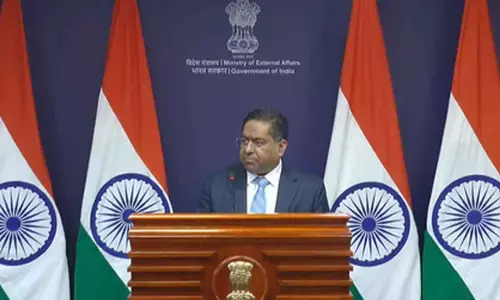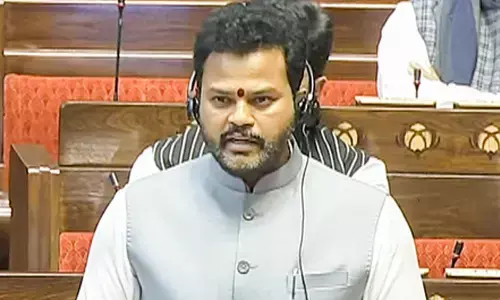How has India progressed in Educational technology?

India has made significant strides in educational technology, driven by factors such as the affordability of online education, government initiatives, a growing internet user base, and a thriving ecosystem of edtech startups. Continued efforts to address infrastructure constraints, teacher training challenges and the digital divide will further contribute to the growth and progress of educational technology in the country.
India has made significant progress in the field of educational technology (edtech) in recent years. With the shift to online learning during the pandemic, educators and students embraced digital platforms, creating a lasting transformation in the education landscape. This progress has fostered digital literacy and innovative teaching methods, laying the foundation for a future where technology is seamlessly integrated into the Indian education system.
Empowering learners to afford quality education
According to a report by RedSeer Consulting, the average monthly spending on online education in India is significantly lower compared to traditional offline education. The report states that the average monthly spending on online education is around INR 800-1,000 per student, whereas offline education costs around INR 3,500-5,000 per student.
By reducing financial barriers, edtech platforms have empowered learners who would otherwise struggle to afford quality education. This has opened up opportunities for students from remote areas, Tier 3/4 cities, and economically disadvantaged backgrounds to access educational resources that were previously inaccessible.
Furthermore, the low cost of online education has enabled parents and guardians to make more informed choices when it comes to their children’s education. They can now opt for affordable digital learning solutions that offer attractive visuals, expert teachers, and engaging content, all without the burden of exorbitant fees associated with traditional education.
Catering to the diverse learning needs of students
The emergence of various EdTech platforms and initiatives has not only facilitated access to quality education but has also provided personalised learning experiences, and skill development opportunities for students across the country.
One of the key ways in which EdTech has addressed diverse learning needs is through adaptive learning platforms. These platforms utilise technology such as artificial intelligence (AI) algorithms to assess students’ strengths and weaknesses and provide personalised learning paths. By analysing individual learning patterns and preferences, adaptive learning platforms are now delivering customized content, remedial resources, and interactive exercises that cater to the unique requirements of each student. This approach helps students learn at their own pace, enhancing their understanding and retention of concepts.
Growth of mobile devices & access to smartphones
With regard to this, mobile devices have become powerful tools for delivering educational content, enabling students to learn anytime and anywhere, which is particularly beneficial for those in remote areas or with limited access to traditional educational institutions. Mobile apps provide various educational resources, including interactive lessons, video tutorials, practice quizzes, and access to educational content in various formats. Moreover, they often incorporate gamification elements, making learning engaging and enjoyable for students.
Additionally, mobile platforms have facilitated the growth of online communities and collaborative learning. Students can connect with peers, participate in discussions, and seek help from experts through online forums and social media groups. This interaction fosters collaborative learning environments, allowing students to share knowledge, gain different perspectives, and address their unique learning needs effectively.
Garnering the support of the government for expansion
The National Education Policy (NEP) 2020 has played a crucial role in promoting edtech, making significant strides in advancing the integration of technology in education. It emphasises the integration of technology in education and encourages the use of digital learning platforms. The policy aims to bridge the digital divide and ensure equitable access to digital education resources. It recognizes the potential of edtech in enhancing the quality and reach of education.
Moreover, programmes like Atal Tinkering Labs and Atal Incubation Centers encourage students to explore technology and innovation in education. Furthermore, the introduction of National Digital Education Architecture (NDEAR) to create a unified and interoperable digital infrastructure for education promotes the integration of different edtech solutions.
What does the future of education technology look like?
The future of edtech progress in India looks promising, with numerous opportunities for further advancements and transformation in the education sector. One important aspect is the development of infrastructure. To support the growth of edtech, it is crucial to invest in digital infrastructure such as reliable internet connectivity and access to devices like smartphones or tablets. Strengthening the digital infrastructure will ensure that students across the country, including those in rural and remote areas, can seamlessly access online educational resources.
Another critical factor for the progress of edtech is teacher training and capacity building. Empowering teachers with the necessary digital skills and training is essential for the effective integration of technology in education. Teachers play a vital role in guiding and facilitating student learning, and equipping them with the tools and knowledge to leverage edtech platforms and resources will enhance the overall educational experience.
Collaboration and partnerships between edtech companies, educational institutions, and the government are also essential for the future of edtech in India. By working together, these stakeholders can exchange ideas, share best practices, and leverage each other’s expertise to create innovative solutions that address the specific needs of the Indian education system.
(The author is Fo under, and CEO of Suraasa)
















